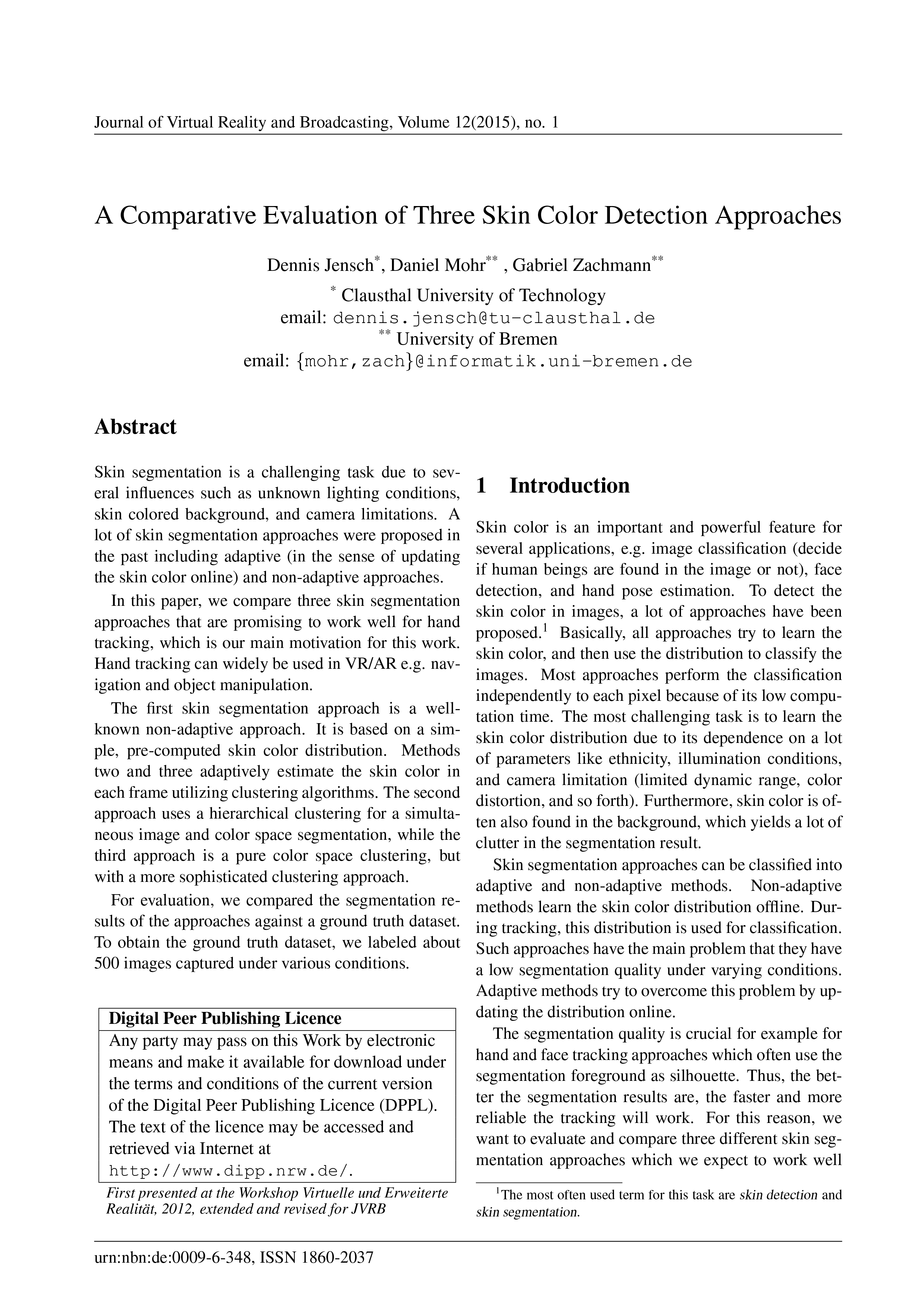A Comparative Evaluation of Three Skin Color Detection Approaches
DOI:
https://doi.org/10.20385/1860-2037/12.2015.1Keywords:
Benchmark, Evaluation, Skin Detection, Skin SegmentationAbstract
Skin segmentation is a challenging task due to several influences such as unknown lighting conditions, skin colored background, and camera limitations. A lot of skin segmentation approaches were proposed in the past including adaptive (in the sense of updating the skin color online) and non-adaptive approaches. In this paper, we compare three skin segmentation approaches that are promising to work well for hand tracking, which is our main motivation for this work. Hand tracking can widely be used in VR/AR e.g. navigation and object manipulation. The first skin segmentation approach is a well-known non-adaptive approach. It is based on a simple, pre-computed skin color distribution. Methods two and three adaptively estimate the skin color in each frame utilizing clustering algorithms. The second approach uses a hierarchical clustering for a simultaneous image and color space segmentation, while the third approach is a pure color space clustering, but with a more sophisticated clustering approach. For evaluation, we compared the segmentation results of the approaches against a ground truth dataset. To obtain the ground truth dataset, we labeled about 500 images captured under various conditions.
Published
2015-01-29
Issue
Section
GI VR/AR 2012





